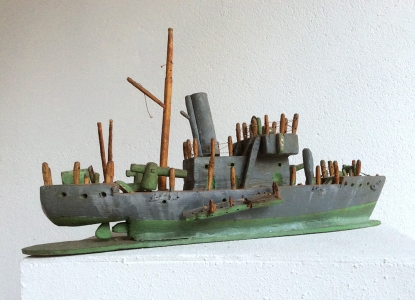THE GOLDEN GALLERY WOrtH OF MEN
The Museum of Popular Arts in Laduz (Burgundy) evokes a unique collection of ship models, ex-voto, objects, memories, documents, daily life of the people of the sea and the inland marine.
The collection includes several topics:
- Came a mythology of the seabed
- Marine life and the expression of feelings
- The patience works
- Narrative images
- The freshwater marine
- Miniaturization and narration
MINIATURIZATION
By their miniaturization, inside bottles boats reproductions fall of great technical prowess and respond to the lack of space marine in their cabin. The isolation of the lighthouse keepers also allowed the creation of patience works.
The exhibited works are born of deep emotions and the experience of a lifetime of labor. The isolation imposed by the sea, the solitude, the absence of the beloved are found in these works patience.
The materials used to make the patience works are varied:
- shells
- coconut
- ivory
- paper
- glass
- cotton
The craze for sea bathing in the late nineteenth century gave rise to a whole maritime art for tourists.
FRESHWATER MARINE
- From river to canal
- boatmen and lock keepers
- the recreational marine and freshwater wolves
- popular works
The eighteenth and nineteenth centuries, navigation grows on the rivers and canals. Water marks are becoming more numerous.
This navigation, caught between two banks, a permanent relationship with the “Earthlings”. The works that come in are different from those of offshore sailors. The barge is a floating house. Saint Nicolas, patron of sailors, was especially celebrated; at the foot of his statue included a boat.
Boatmen crosses are placed on the towpaths in votive chapels, or inside the barges. On these crucifixions, the boatmen, who had free time, did not hesitate to carve all the instruments of the Passion. The Rhone Valley has kept many testimonies.







